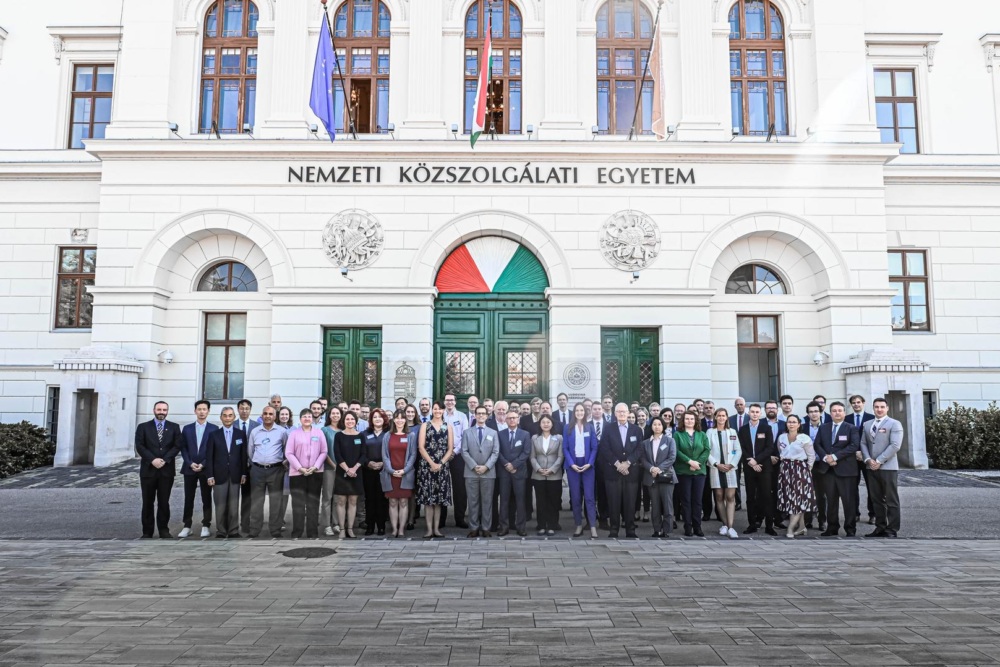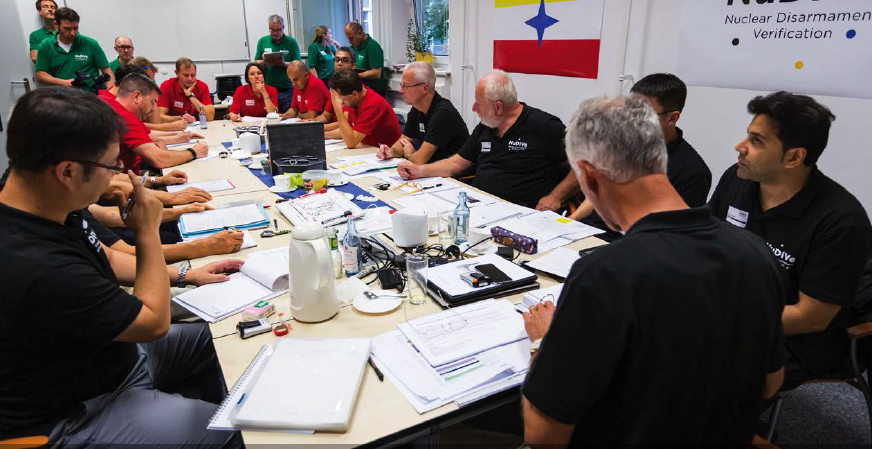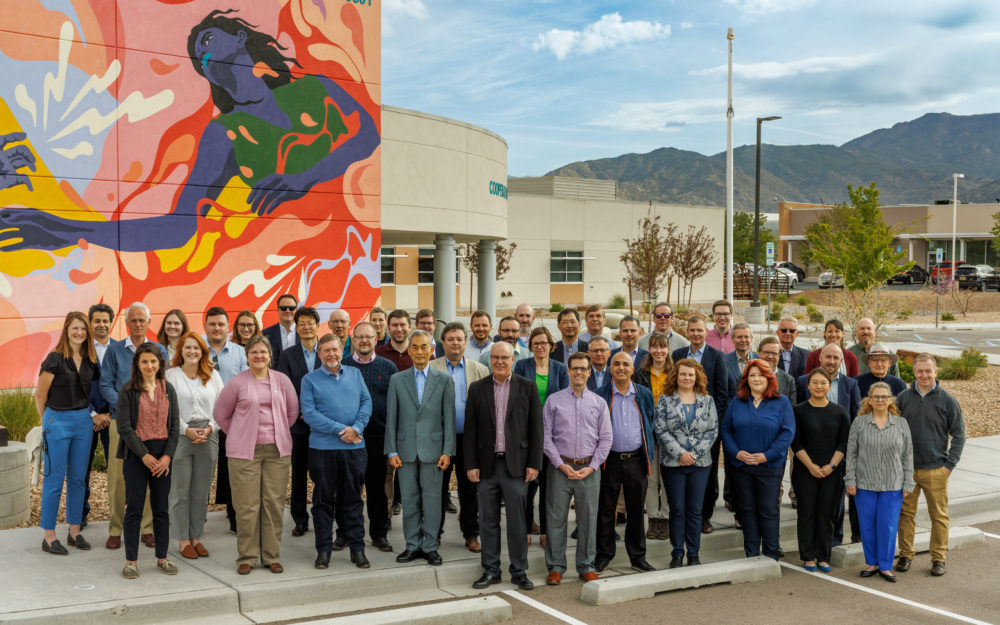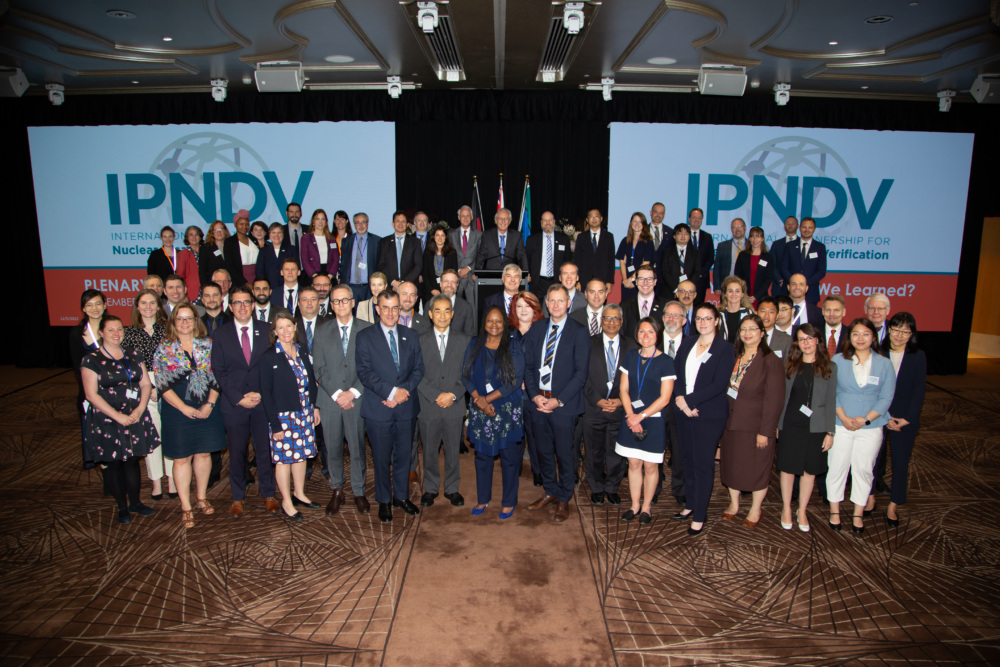
IPNDV Convenes in Budapest for Working Meeting
The International Partnership for Nuclear Disarmament Verification (IPNDV) convened its most recent working meeting in Budapest, Hungary from September 4-8, 2023.
New Report Summarizes “Paper to Practice”
Outcomes in Nuclear Disarmament Verification
The seventh International Partnership for Nuclear
Disarmament Verification (IPNDV) plenary meeting brought 89 representatives
from 24 countries, plus the European Union, to Ottawa, Canada from December
3-5, 2019 to complete Phase II and to begin planning for Phase III. The
meeting included presentations about practical exercises and technical
demonstrations that took the Partnership’s findings “from paper to practice.” Partners
focused on technical gaps and policy questions that they will address in Phase
III which will officially kick-off in March 2020.
The IPNDV’s Phase
II Summary Report: Moving from Paper to
Practice in Nuclear Disarmament Verification, released in January 2020,
addressed verification of nuclear weapon declarations, verification of
reductions, and technologies for verification.
A series of papers and technology data sheets that provide additional
detail on Phase II activities will be released on the IPNDV website, www.ipndv.org, in the coming weeks.
After the plenary meeting, IPNDV participants visited
the Canadian Nuclear Laboratories’ Chalk River Site, the historical home to
Canada’s first nuclear reactor. Participants
observed demonstrations of experimental techniques for verifying the presence
or absence of weapons-grade nuclear materials. These are important tasks for
the nuclear disarmament verification process.
The Chalk River demonstration was one of five practical
exercises and technology demonstrations that conducted during Phase II to advance
the Partnership’s ability to identify technologies and procedures that could be
applied across all stages of the nuclear weapons dismantlement lifecycle. In addition to the Chalk River demonstration,
they included:
In addition to the exercises and demonstrations,
Phase II explored how to characterize other monitoring and verification
considerations such as state declarations and treaty limitations. These activities ultimately reinforced the
findings of Phase I that multilateral verification of nuclear dismantlement is
possible, although it will be challenging and will require a tailored
application of verification options—tools, policies, and procedures—to prevent
disclosure of proliferation-sensitive safety and security as well as external
factors unique to a given country’s nuclear weapons enterprise.
The first meeting of Phase III will be held in
Geneva in March 2020. Following the meeting, the IPNDV will host a public event,
“Innovations in Nuclear Disarmament Verification: Advancing Technology and
Approaches,” from March 18-19. This
event, held a few weeks before the 2020 NPT Review Conference, will provide the
public, including the diplomatic community, an opportunity to explore the
challenges of, and potential solutions for, nuclear disarmament verification
through expert panels, poster sessions, and an interactive exhibit.
###
Sign up for our newsletter to get the latest on nuclear and biological threats.
The International Partnership for Nuclear Disarmament Verification (IPNDV) convened its most recent working meeting in Budapest, Hungary from September 4-8, 2023.
The International Partnership for Nuclear Disarmament Verification (IPNDV) convened its most recent working meeting in Albuquerque, New Mexico from April 24-28, 2023, hosted by Sandia National Laboratories.
The International Partnership for Nuclear Disarmament Verification (IPNDV) held its annual plenary meeting in person from December 5-9, 2022, in Sydney, Australia. This meeting of the IPNDV was generously hosted by the Australian Safeguards and Non-Proliferation Office (ASNO).


